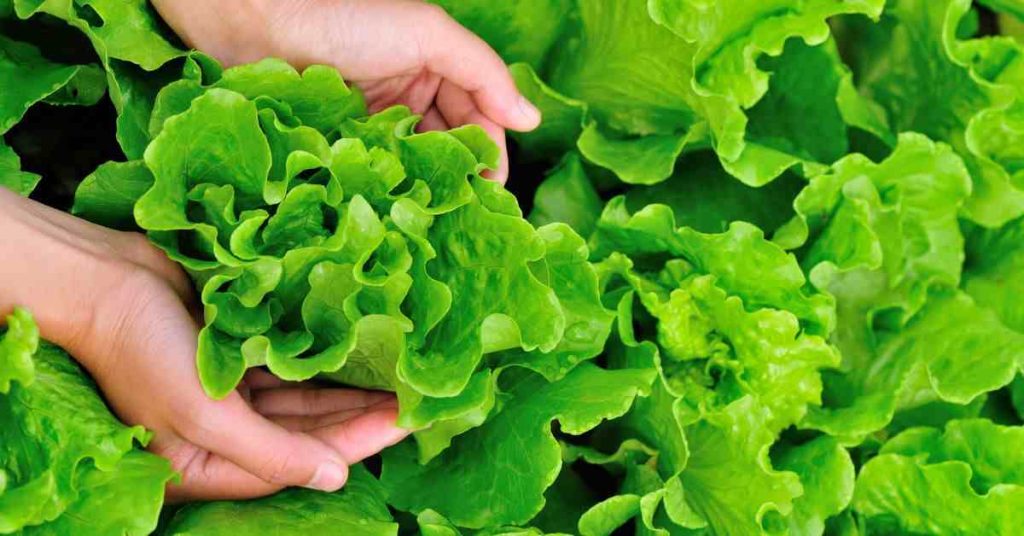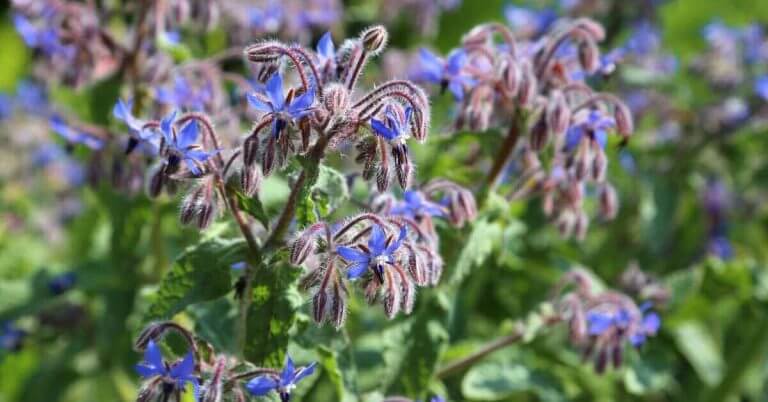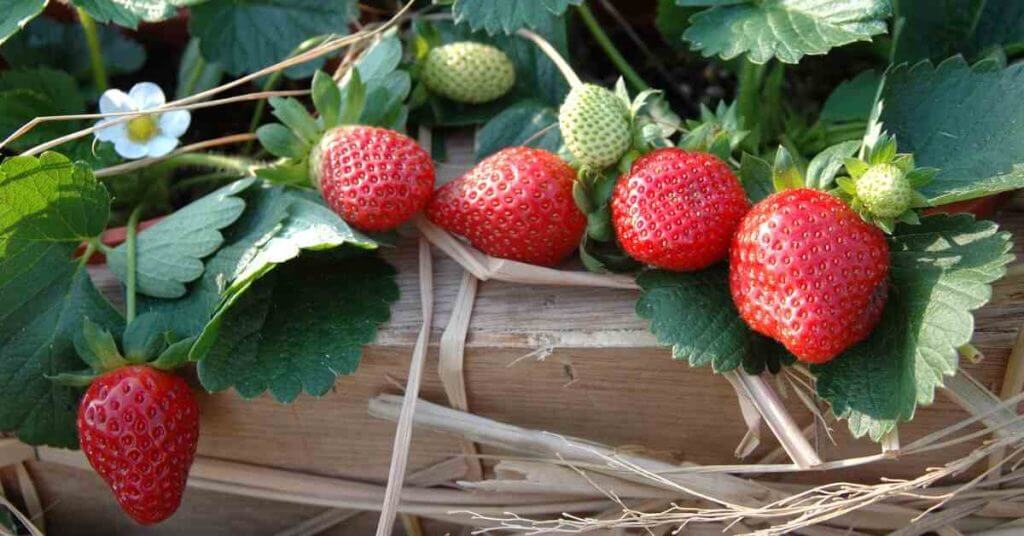
How to Grow Lettuce – A Seed To Harvest Guide
Learn how to grow lettuce from seed to harvest with these essential tips for a thriving garden and crisp salads.

While seemingly opposites, humans and plants share one significant commonality – we both tend to grow best in communities. This rings especially true for familiar garden favorites like tomatoes.
Despite being one of the most common garden plants, and a staple of almost every home garden, tomatoes come with a host of potential problems if not carefully managed.
In particular, tomatoes are known for being heavy feeders that rarely prosper when asked to share root room, water, and nutrients with anything else. It is crucial, therefore, that when choosing the best companion plants for tomatoes, we do not pick plants that compete with potential root space.
Navigating the world of companion planting can quickly become daunting. With thousands of plant and vegetable varieties to choose from, it’s easy to feel overwhelmed when searching for the perfect partners for your tomato plants.
That’s why this article will keep it simple by providing a list of five easy-to-manage plants, based on experience, that will maximize the benefits while mitigating potential conflicts.
These plants will not only help your tomatoes, but the tomatoes will return the favor, providing a synergistic boost for your entire garden.
Companion planting is an age-old agricultural practice that pairs different crops in close proximity for mutual benefit, aiming to enhance pest control, improve pollination, make efficient use of space, and boost overall crop productivity.
This method leverages the natural abilities of certain plants to complement each other. The most common example is The Three Sisters, where corn, beans, and squash work synergistically to improve the yield of all three.
Despite the popularity of companion planting among gardeners, who report various benefits such as improved plant health and increased yield, scientific evidence supporting these claims remains sparse.
However, most knowledge about companion planting comes from years of observation and experimentation, rather than direct scientific research. While there is no concrete proof of its effectiveness, the absence of evidence against it, combined with the wealth of anecdotal support, makes companion planting a valued practice among many gardeners.
Companion planting is like setting up a good neighborhood for your plants. It’s all about putting plants together that help each other out, and is a staple of polyculture and permaculture gardens. This could mean some plants keep bugs away from their neighbors, or they might even make the soil better for those around them.
It’s a smart way to get a healthier garden and more food or flowers without having to use chemicals. Sure, it takes a bit of time to figure out who should be neighbors, but it pays off. You end up with a garden that’s not just growing, but thriving, all because the plants are helping each other out.
While there are likely hundreds of companion plants that work well with tomatoes, the list below offers five of the best, based on availability and ease of planting, while also being companions for many other plants that may also be in your garden.


The tomato and basil combination is as good off the plate as it is on.
Tomatoes are notoriously heavy feeders with deep root systems that suck out much of the surrounding nutrients. Being a shallow-rooted plant, basil does not compete with tomatoes for these same precious nutrients, making them safe to combine close together.
The aromatic oils in basil are thought to create a strong scent that repels pests that commonly afflict tomato plants, including flies, mosquitoes, and even tomato hornworms. This also reduces the need for chemical pest control methods.
Basil is also thought to help prevent fungal diseases, such as blight and mildew, which often ruin tomatoes. While the exact mechanism isn’t scientifically proven, the strong scent of basil is thought to interfere with the spores’ ability to locate tomato plants.
Many gardeners claim that growing basil near tomato plants can enhance their growth, health, and flavor. It is unlikely, however, that basil can somehow affect the flavor of tomatoes directly – it is more likely to be related to the general benefits of companion planting producing a healthier plant, rather than any direct interaction between the plants.
Finally, basil flowers are well known for attracting pollinators and beneficial insects, such as bees and ladybugs, helping to not only pollinate tomato flowers, which can increase fruit set, but also prey on harmful pests, providing a natural form of pest control.
To successfully plant basil as a companion for tomatoes, plant them around the base of tomato plants, ensuring there is enough space for both plants to grow without competing for sunlight (both tomatoes and basil require a good amount of sunlight, so choose a planting spot that receives at least 6 to 8 hours of direct sunlight daily)
Tomatoes and basil plants have similar watering needs, part of what makes them compatible companions, so ensure the soil is well-drained but remains consistently moist.

Marigolds are well known in the gardening community as a great companion plant for tomatoes, especially for deterring pests.
In particular, marigolds are valued for their ability to deter root-knot nematodes, parasites that feed off the nutrients in a tomato’s root system. These microscopic worms attack the roots of plants, including tomatoes, causing stunted growth, wilting, and reduced yields. Certain types of marigolds, especially French marigolds, release a chemical into the soil when their roots decay that is toxic to nematodes.
Similarly to basil, the strong scent of marigolds is believed to repel insects like aphids and mosquitoes that might otherwise harm tomato plants. While the effectiveness can vary based on the marigold variety and the specific pest, many gardeners observe a noticeable reduction in pest problems when marigolds are interspersed with tomatoes.
Marigolds also add a splash of color to vegetable gardens, breaking up the excessive green from vegetable-heavy plots. They can also be used to help in marking rows or delineating different sections of the garden.
For the best results, plant marigolds right next to your tomato plants or even a season ahead to get the soil ready for your tomatoes, keeping those pesky nematodes at bay over the long haul. Just remember to plant them directly in the garden soil – simply popping them in pots near your tomatoes won’t cut it, especially if you’re aiming to fight off nematodes.

Like tomatoes, carrots prefer cooler soil, making them perfect to plant in the shade of mature tomato plants. And since both carrots and tomatoes form the backbone of most garden plots, it is great to be able to grow both plants at the same time.
While carrot roots, like those of tomatoes, grow deep into the soil, they are much less demanding than the heavy-feeding tomatoes, ensuring they do not compete and potentially harm your tomatoes.
In particular, tomatoes require lots of potassium and phosphorus to support their fruiting. Carrots, on the other hand, while still requiring some phosphorus for root development, require little nitrogen, ensuring that plenty remains available in the soil.
These companions will also help you to make the most of your space in your garden. Since carrots are root vegetables that take up minimal above-ground space, and tomatoes are tall, vertical growers, they can be planted close together, while helping to shade the soil, keeping it cooler and reducing moisture loss, which is beneficial for both plants, especially during hot weather.
Carrots and tomatoes also have complementary scents; the strong scent of tomato plants can help to mask the smell of carrots, protecting them from some of their common pests, such as carrot flies, while the feathery foliage of carrots can help camouflage tomato plants from some of their aerial pests.
It’s a good idea to plant carrots around or between tomato plants, taking care not to disturb the tomato roots. Timing is key; planting carrots a few weeks before the tomatoes can ensure they do not overshadow the carrots too soon, allowing the carrot seedlings adequate sunlight to establish themselves.

Borage, also known as starflower with its blue star-shaped blossoms, is a versatile and beneficial herb that has a surprising amount of uses. While some parts are edible and its seeds provide oil, it is also used for many medicinal purposes, from skin disorders like eczema to attention deficit hyperactivity disorder (ADHD).
Borage can also prove just as useful for your tomatoes. Firstly, it is an excellent pollinator and acts as a magnet for bees, crucial for pollinating tomato flowers and many other garden plants.
Besides attracting pollinators, borage also attracts predatory insects that feed on garden pests. For example, the presence of borage can help increase the population of beneficial insects like ladybugs, which consume aphids, a common pest on tomato plants.
Borage is deep-rooted, drawing up trace minerals from the soil, which can benefit neighboring plants like tomatoes when the borage leaves decompose. This natural fertilization process can improve the overall fertility and health of the soil, contributing to more robust tomato plants.
It also acts as a natural mulch: as borage sheds its leaves, it helps retain soil moisture, suppress weeds, and eventually break down, adding organic matter and nutrients back into the soil. It essentially provides free compost!
Like marigolds, borage adds beauty to the garden with its vibrant blue flowers and lush foliage, creating a visually appealing environment that can break up the monotony of green and brown.
To make the most of borage as a companion, plant the seeds or seedlings near your tomato plants, leaving a little more room than you might think as borage does grow to be quite large.
While borage is known for self-seeding, readily returning year after year without much effort, keep an eye on where it spreads to ensure it remains where you intend for it to be.

Last but certainly not least, we have classic beans, one-third of The Three Sisters trio.
Beans, like other legumes, have a special ability to fix atmospheric nitrogen into the soil through a symbiotic relationship with Rhizobium bacteria in their root nodules, converting nitrogen from the air into a form that plants can use to naturally enrich the soil.
Beans tend to be low-growing, covering the soil and acting as a natural mulch to retain moisture, suppress weeds, and prevent soil erosion. The shading of the soil can also keep the ground cooler, which can be beneficial for tomato root development in the hot summer months.
While beans and tomatoes can be compatible companions, there are a few considerations to keep in mind.
Some bean species grow vertically and like to climb tomato vines. While not necessarily a bad thing, it needs to be managed carefully to avoid overcrowding and to ensure both plants have enough space and support to thrive without competing excessively for light or nutrients.
Bush beans, French beans, and runner beans are excellent starter beans that will provide supporting ground cover for your tomatoes.
Since tomatoes are heavy feeders and rarely prosper when asked to share root space, avoid other deep-rooted heavy plants such as peppers and potatoes by ensuring there is enough space between them.
Potatoes are also members of the same family (Solanaceae) and are susceptible to the same blights and diseases, especially late blight. Planting them close together can increase the risk of disease transmission.
Brassicas (the cabbage family), including cabbage, broccoli, cauliflower, kale, and Brussels sprouts, can compete with tomatoes for nutrients and can potentially inhibit their growth due to their extensive root systems. They also have different water and fertilizer requirements and should be grown outside of the direct root zone of tomatoes.
Corn and tomatoes may be great when combined in the kitchen, but not when planted together – they both attract the same sort of pests and fungal infections, increasing the chances of both succumbing to disease.
Dill is often praised as a great companion plant for tomatoes – while young dill plants can be beneficial for tomatoes, mature dill plants can stunt tomato plant growth.
For those looking for a few companion plants to improve their tomato yields, look no further than basil, marigolds, and carrots. They are simple to acquire, plant, and grow, and will yield excellent returns.
Space and time permitting, try adding in borage and beans for some extra oomph. Avoid other deep-rooted plants like potatoes and cabbage that will likely outcompete your tomatoes.
Tomatoes planted with basil and marigolds are the most common combination and more than good enough for the majority, especially beginners in their first year. After the first few seasons, you can experiment with adding beans and borage, observing the results, and changing depending on your personal findings.
Companion planting is an age-old agricultural practice that pairs different crops in close proximity for mutual benefit, aiming to enhance pest control, improve pollination, make efficient use of space, and boost overall crop productivity.
For those looking for a few companion plants to improve their tomato yields, look no further than basil, marigolds, and carrots. They are simple to acquire, plant, and grow, and will yield excellent returns.
Since tomatoes are heavy feeders and rarely prosper when asked to share root space, avoid other deep-rooted heavy plants such as peppers and potatoes by ensuring there is enough space between them.

Learn how to grow lettuce from seed to harvest with these essential tips for a thriving garden and crisp salads.

Pinterest Instagram Youtube Pinterest Instagram Youtube Jump to: Have you ever stopped to consider what’s really in the water flowing from your tap? For many of

Here are the 5 best companion plants for peppers that will deter pests, attract pollinators, increase fruit set and yield, and enable your peppers to thrive.

With its superior fatty acid profile and vitamin content, it is clear that tallow proves better for your skin when it comes to tallow vs coconut oil.

Here are the 5 best companion plants for strawberries, and how each will compliment each other for healthier and more lucrative strawberries.

An overview of everything you need to know about what is companion planting, and what plants should be included and avoided to help your garden thrive.
Your blog is a goldmine of information. Keep up the great work!